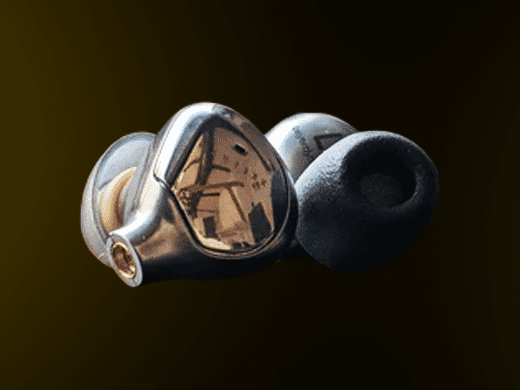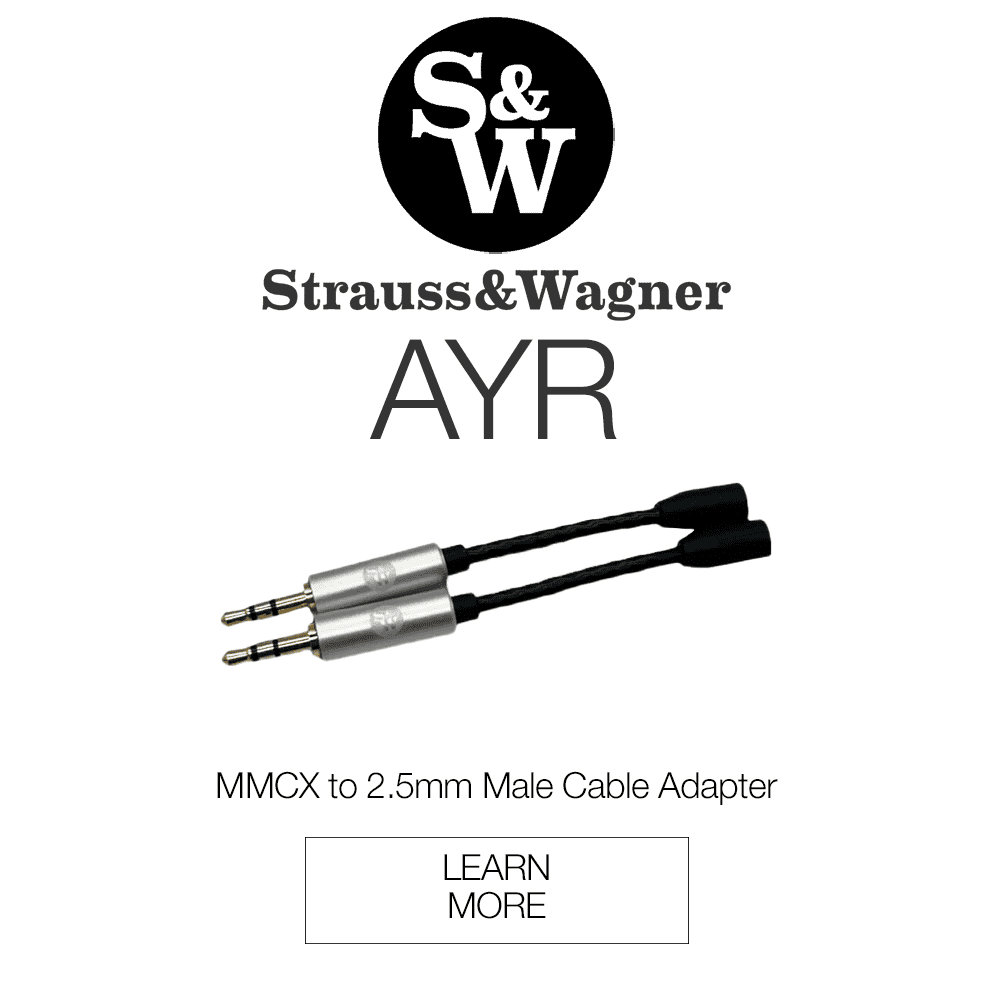Beyerdynamic Xelento Remote 2 Second Generation Headphone Review
Today we’re going to be taking a look at the brand new, second generation of some reputable in-ear headphones: The Beyerdynamic Xelento Remote 2 Gen. It seems likely that this generation is going to be met with a fair deal of excitement: five years after the release of the first gen, new units have become increasingly scarce. I never got the chance to try the Xelento first generation, so this review is coming from a fresh pair of ears without any pretenses. Does the Second Gen Xelento Remote live up to its $999 price tag?
Please note: For this review, Beyerdynamic provided us with the wired version of the Xelento Remote Second Generation. There will be a wireless version that uses Bluetooth 5.2 and is compatible with AAC, SBC, aptX HD, aptX adaptive, and LHDC codecs.

What’s In The Box?
-Beyerdynamic Xelento Remote (Second Generation) In-Ear Headphones
-1 pin to 3.5mm unbalanced headphone cable with a 3-button universal remote
-1 pin to 4.4mm balanced headphone cable
-10 pairs of ear tips:
-3 Foam (S/M/L)
-7 Silicone (XS/S/M/L/XL/XXL/XXXL)
-Firm Leather Carrying Case
-Safety Guide
-Quickstart Guide
-Electrostatic Cloth
Look and Feel
The Xelento Remote Second Generation bares an obviously intentional resemblance to a pair of earrings. For starters, the buds are tiny. I mean really, impressively tiny. Then there’s their shiny metallic housing, featuring a 24-karat gold engraving of the Beyerdynamic logo. The two wires provided are fairly thin and seem susceptible to tangling, but are nonetheless well insulated and aesthetically match the shiny glitz of the Xelento buds with their semi-shiny white color and silver and gold colored jacks. The remote, featured on the right-side headphone wire, seems pretty standard and fits with the rest of the look with its silver body and white buttons.
I’m very happy with the generous ear-tip situation. Both the foam and silicone varieties included with the Xelento seem to be of a higher quality than what usually comes included with in-ears. The silicone tips have a long and ovular shape, and I would suggest going with one size up from what you would usually use. I usually have somewhat sensitive ear canals, but I found these silicone ovals were maximally ergonomic and produced a comfortable and natural fit, even if it took a minute of getting used to.
As for the buds themselves, this is a rare case of struggling a little bit because of their unusually small size. I don’t really think this is the worst complaint to have though, as this quality ultimately had me forgetting that they were even in my ears. It’s an impressive engineering feat more so than an annoyance.
Design
The Xelento Remote has a Tesla coil in it – a little, tiny, baby tesla coil. Pretty neat thing to see in a pair of buds. This results in enhancements across a slew of specs, such as more magnetic circuitry, lower distortion, and a wider, more accurate frequency response.
Frequency Response: 5Hz – 50 kHz
Transducer Type: Beyerdynamic Tesla 1-way Dynamic, 11mm
True Harmonic Distortion: 0.02%
Max Sound Pressure Level: 134 dB SPL
Impedance: 16 Ohms

Soundstage
The sonic imaging in the Xelento was nothing short of ethereal. I found the size of the buds had a way of contributing to this; what I could hear sounded impossibly larger than the little silver specks that sat in my ears, and had my brain mentally compensating for the difference by processing the sound as if it was coming from a source beyond the ear pieces. Sometimes a headphone produces pans that, while accurate, are merely a function of utility and not too impressionable. This isn’t the case with the Xelento, which I felt heavily emphasized asymmetries in mixes that gave me the elusive feeling of hearing parts in familiar songs in a way I haven’t before. While I thought the balance was excellent, the imaging was truly exceptional and was probably my favorite quality of the Second Generation Xelento’s sound.
Lows
Such tiny buds, but such enormous bass. It’s another case of the sound not matching up with the dime-sized pieces in my ears, thus sending my brain searching for a tangible explanation of the sound source. In this way, I found the subs on the Xelento gave a deep, heady sensation, and made mono-bass parts sound like they were approaching me omnidirectionally. Though the bass could be a bit too loud for my sensitive personal low-end preferences, I definitely don’t think the bass balance is a mistake on Beyerdynamic’s part; I’m confident tons of people will fall in love with it.
Mids
While the high mids are fairly natural sounding, there’s a unique harmonic quality in the low mids that has both its benefits and its drawbacks. On the one hand, it’s not the most precise sound as it competes with the already-prominent low end. On the other hand, there’s a pleasant, darkly colored vibrational quality that comes out of this part of the balance that isn’t exactly what I would call muddy. Though an imprecise distinction between bass and low mids is a common criticism I have for headphones, I actually think I lean more toward a favorable view of this quality in the case of the Xelento Remote Second Generation. The harmonic expression of the low ends of acoustic guitars and pianos became exceptionally soothing and brought to mind the visual of someone mixing paint by swirling it on a color pallet. Acoustic drums and percussion also benefited from this inflection, as their low transients became extra pronounced and impactfully cut through both the balance and the image. Though accuracy and distinction may have paid the price, it strikes me as an artistic license taken by the engineers that paid off.
Highs
Interestingly enough, unlike the typical balance in Beyerdynamic over-ears that don’t really shy away from the top of the frequency spectrum, the Xelento spikes a bit earlier in its highs before deciding it wants very little to do with anything above approximately 10-12kHz. Don’t get me wrong: hi-hats sound crispy, breath is still present enough in vocals, and acoustic guitars still sound strummy – but those extra reverb and cymbal details you get from a headphone with strong highs just aren’t there. Again: not quite my taste as I’m fond of bright headphones that drive into the upper teens of kHz, but I honestly understand the logic. The Xelento’s overall balance is smooth and velvety, and I can’t pretend like that has nothing to do with its heavy-handed high-frequency attenuation – and even then, you need to go pretty high before you’ll notice this drop-off.
Overall
I’m pleasantly surprised when I see Beyerdynamic release a headphone like the Xelento Remote Second Generation, which prioritizes a more musical tone rather than the ultra-accurate balance Beyerdynamic is commonly associated with. There’s an obvious elegance to it, from its itsy-bitsy and glamorous jewelry-inspired design to its big, dramatic image and pleasant warmth. For me, this is a case of not quite agreeing with everything a headphone’s balance has to say for itself, but genuinely understanding and respecting where it’s coming from – and loving it for its imaging. Overall, the Xelento is a classy buy – for more reasons than one.
The Beyerdynamic Xelento Remote Second Generation can be purchased from Audio46. The wireless version can be found here.
Compare the ranking of various headphones, earbuds and in-ear monitors using our tools.
Discuss this, and much more, over on our forum.
---MAJORHIFI may receive commissions from retail offers.















